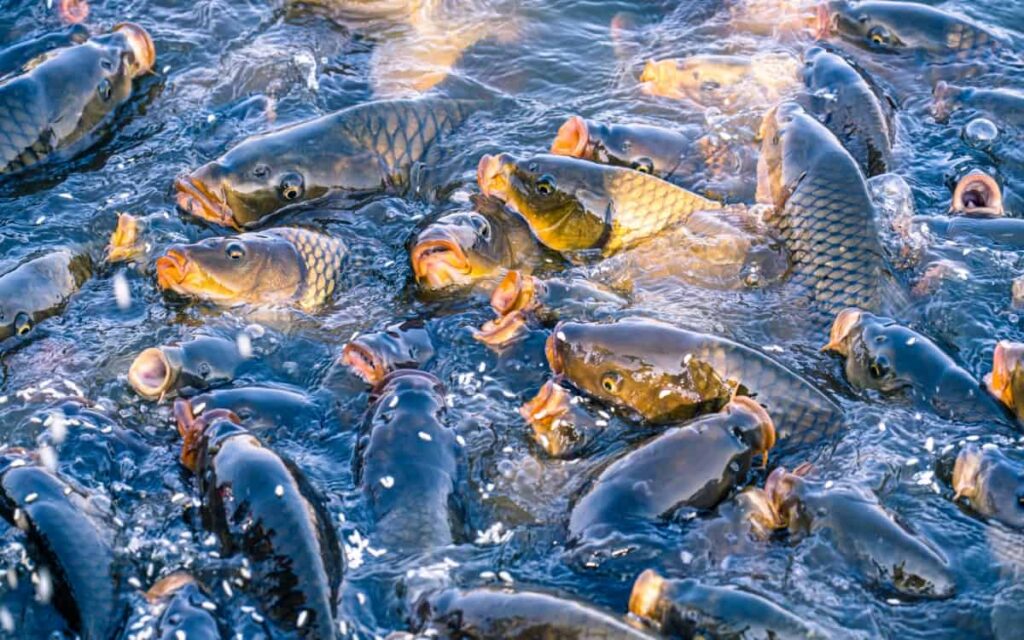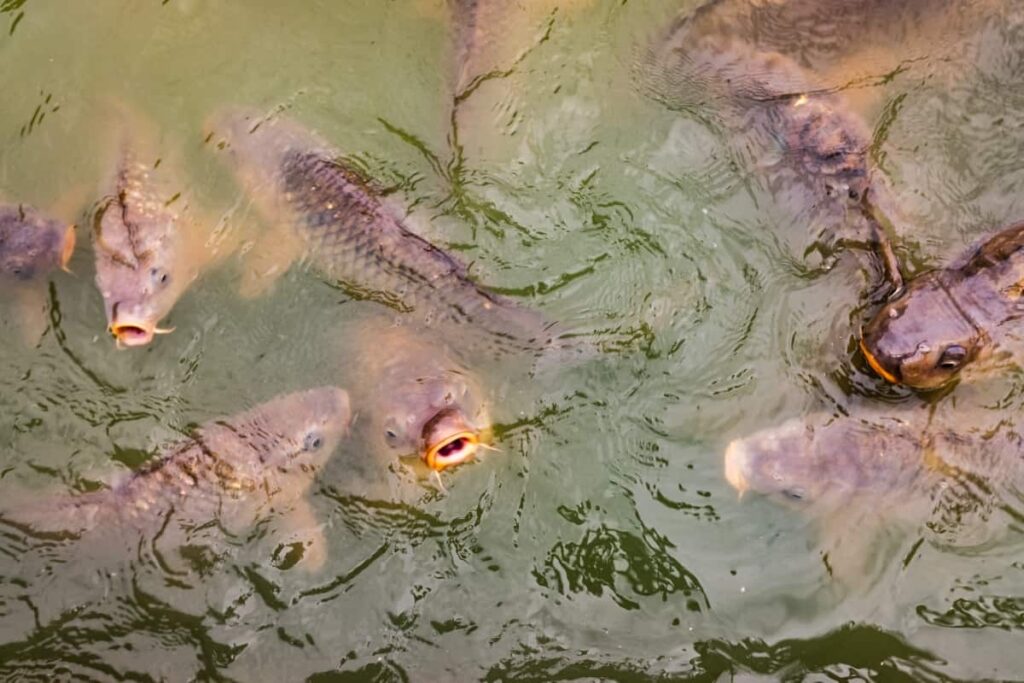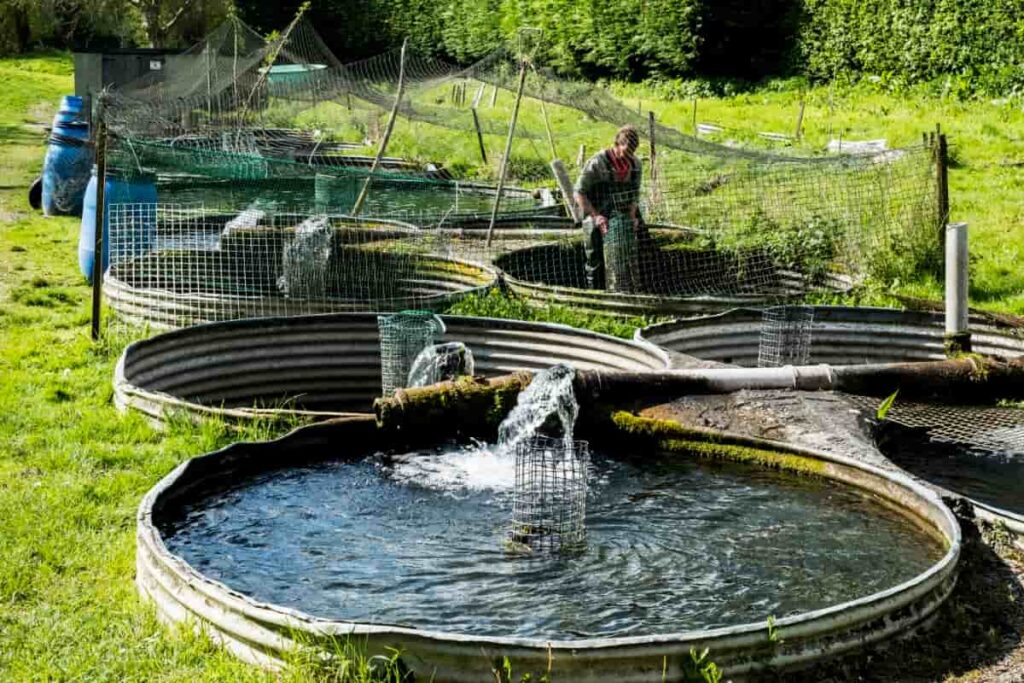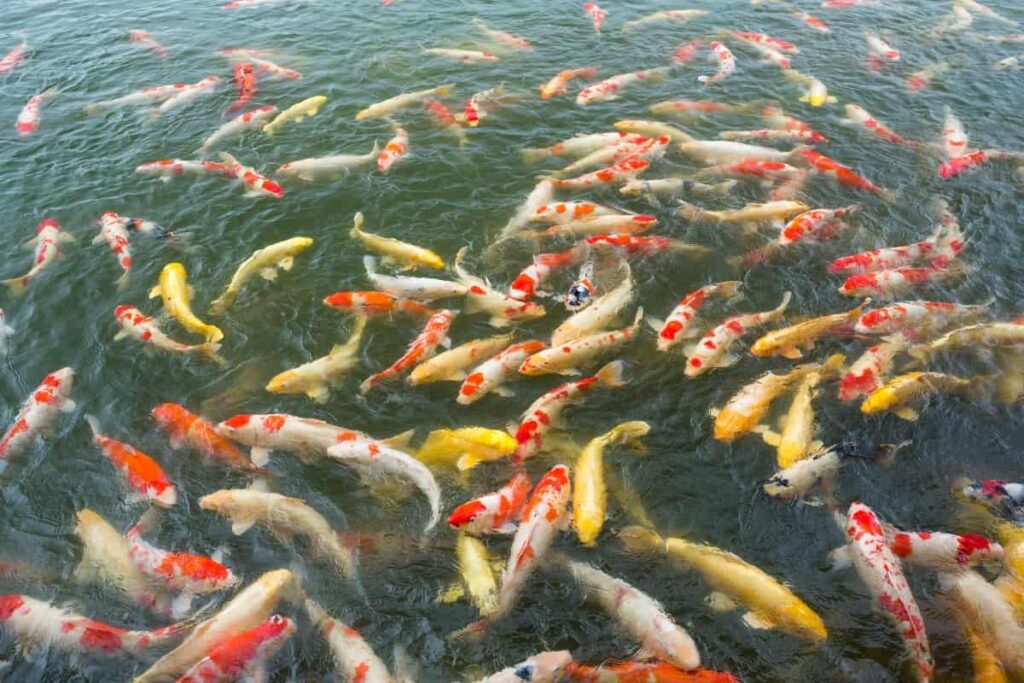Building a fish pond requires careful planning and execution to create a suitable environment for aquatic life. Fish pond preparation is crucial in ensuring the success of your farming venture. Proper design and layout play a significant role in maximizing the efficiency of your pond system.

Site Selection for Pond Construction
The location should have access to sunlight for proper algae growth and warmth. Select an area with good drainage to prevent waterlogging issues. Avoid sites near sources of pollution or areas prone to flooding. Look for a spot with minimal tree cover to reduce leaf litter falling into the pond. Consider proximity to electricity for future aerator installation. Ensure there are no underground utility lines that could be damaged during excavation. Test the soil’s composition and pH levels before proceeding with construction.
Design and Layout of Fish Ponds
The layout of the pond should consider factors like water flow, sunlight exposure, and accessibility for maintenance. The shape and size of the pond will also impact its functionality and efficiency. Circular or oval shapes are often recommended as they allow for better circulation of water compared to rectangular ponds. Additionally, incorporating features like shallow areas for spawning or deep zones for fish growth can optimize the pond’s productivity.
Soil Testing and Suitability
Soil composition is important for finding the success of your fish pond. Before breaking ground, conducting a thorough soil test is essential to assess factors like pH levels, nutrient content, and drainage capabilities. Soil testing can also provide insights into potential challenges, such as acidic or alkaline conditions that may impact water quality and ultimately affect the health of your fish stock. Choosing a site with favorable soil conditions can set your fish farm up for long-term success by ensuring optimal water quality and creating an environment where your aquatic life can thrive.
In case you missed it: Fish Pond Size Calculator: Ideal Pond Size for 1000, 5000, and 10,000 Fish

Pond Excavation Techniques
Pond excavation involves digging out the designated area to create a suitable environment for fish farming. Proper planning of the excavation process is essential to ensure the structural integrity of the pond. The size and depth of the pond should be carefully considered based on the type of fish you plan to raise. Excavation techniques may vary depending on factors such as soil composition, topography, and water source. Common methods include using excavators, bulldozers, or manual labor to remove soil and shape the pond according to design specifications.
Water Source and Quality Assessment
The source of water for your pond can directly impact the fish’s health. Before filling up your pond, it’s essential to test the quality of the water you’ll be using. Water testing should include parameters like pH levels, dissolved oxygen content, and the presence of any contaminants or pollutants. Additionally, consider installing filtration systems or treatment methods if necessary to maintain optimal water quality for your fish. Monitoring these factors will help ensure a healthy environment for your aquatic livestock to thrive in.
Installation of Inlet and Outlet Structures
When it comes to constructing a fish pond, one crucial aspect that fish farmers need to pay attention to is the installation of inlet and outlet structures. These components play a major role in maintaining the water quality and circulation within the pond. Inlet structures are designed to allow fresh water into the pond, ensuring proper oxygen levels and nutrient distribution for aquatic life. On the other hand, outlet structures help regulate water flow out of the pond, preventing flooding during heavy rainfall or controlling water levels as needed.
In case you missed it: 10 Best Feeds for Fish Weight Gain: Grow Fast and Get More Weight in a Short Period

Properly installing these structures requires careful planning and consideration of factors such as pond size, topography, and desired water flow rates. By strategically placing inlet and outlet structures, fish farmers can make an environment that promotes fish growth and overall productivity in their ponds.
Lining the Pond
Lining the pond is a crucial step in ensuring its durability and preventing water seepage. The choice of lining material depends on factors like soil composition and budget constraints. Popular options for pond lining include clay, geotextile liners, and synthetic materials like HDPE or PVC. Clay is cost-effective but requires proper compaction to be effective. Geotextile liners are durable but may require additional protection from sharp objects.
Synthetic liners offer excellent resistance to punctures and UV degradation, making them long-lasting solutions for fish ponds. Proper installation techniques, such as seam welding and securing edges, are essential for optimal performance.
Fertilization for Initial Nutrient Balance
Fertilization plays a key role in achieving this balance by providing essential nutrients that support the development of algae and plankton, which are fundamental components of the pond ecosystem. Fertilizers like manure or commercial products can be used to supplement nutrient levels in the pond.
However, it’s important to carefully monitor and adjust fertilization practices based on water quality tests and observed algae growth. By establishing a routine fertilization schedule and regularly testing water parameters, fish farmers can maintain optimal nutrient levels in their ponds.
Aeration and Oxygen Management
Aeration and Oxygen Management in fish ponds are crucial for the health and well-being of your aquatic species. Proper oxygen levels ensure that your fish can thrive and grow efficiently, making it essential to implement effective aeration techniques. By introducing oxygen into the pond water, you create an environment where aerobic bacteria can break down organic matter, preventing harmful gases from accumulating.
In case you missed it: 15 Steps to Start Biofloc Fish Farming: Biofloc Fish Culture Cost, Profit, and Training

This process helps maintain water quality and reduces the risk of diseases among your fish population. There are various methods of aerating a pond, including diffused aeration systems, paddlewheel aerators, and surface aerators.
Pre-stocking Conditioning and Water Testing
Preparing your fish pond for stocking is a crucial step in ensuring the health and success of your aquatic inhabitants. Before introducing any fish into the water, it’s essential to conduct thorough pre-stocking conditioning and water testing. During this phase, you’ll need to assess various parameters such as pH levels, oxygen content, temperature, and potential contaminants. Water testing kits are available and can provide insights into the quality of your pond water.
Adjusting the water conditions to meet the specific requirements of the fish species you plan to stock is vital for their well-being. Fish farming can be a rewarding endeavor if done correctly. By employing effective pond construction techniques and thorough fish pond preparation, farmers can create an optimal environment for their aquatic livestock to thrive. By following these tips, fish farmers can set themselves up for success and maximize their productivity.
- Profitable Village Farming Business Ideas in 2024
- High-Yield Aquaculture: Fast-Growing Fish for Farming
- Effective Fish Pond Construction Techniques for Beginners
- Irrigation and Water Management in Pineapple Farming
- Blossom to Harvest: Mastering Flowering and Pollination in Papaya Farming
- Pig Fattening Essentials: From Selection to Sale for Beginners
- Raising Wagyu Cattle: A Complete Guide for Premium Beef Production
- Soil Types and Their Water Holding Capacity
- Optimizing Irrigation Schedules for Coconut Groves for Enhanced Yield
